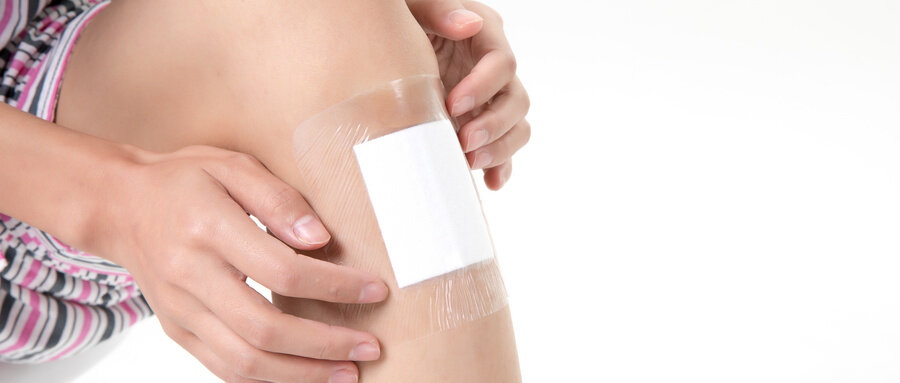Email cannot be empty
Password cannot be empty
Email format error
Email cannot be empty
Email already exists
6-20 characters(letters plus numbers only)
The password is inconsistent
Email format error
Email cannot be empty
Email does not exist
6-20 characters(letters plus numbers only)
The password is inconsistent


Comprehensive Guide to Medical Dressing Pads: Everything You Need to Know
Medical dressing pads are an essential component in wound care management, offering protection and aiding in the healing process. These pads are used in a variety of settings, from hospitals to home care, providing a sterile and absorbent barrier for wounds. In this comprehensive guide, we will explore everything you need to know about medical dressing pads, their types, uses, and the importance of choosing the right one for different medical needs.
What are Medical Dressing Pads?
Medical dressing pads are specialized pads used to cover and protect wounds. They are designed to absorb exudate, prevent infection, and promote a conducive environment for healing. These pads come in various shapes, sizes, and materials to cater to different types of wounds and their specific requirements.
Types of Medical Dressing Pads
Understanding the different types of medical dressing pads is crucial for proper wound care. Here are some of the most commonly used types:
1. Gauze Pads
Gauze pads are versatile and widely used in wound care. They are made from woven or non-woven materials and come in sterile and non-sterile options. Gauze pads are ideal for cleaning wounds, absorbing exudate, and providing a barrier against contaminants.
Foam dressings are soft, absorbent, and provide a cushioning effect, making them suitable for wounds with moderate to heavy exudate. They maintain a moist environment, which is essential for wound healing.
Hydrocolloid dressings contain a gel-forming agent that interacts with wound exudate to form a moist healing environment. They are suitable for wounds with light to moderate exudate and help in debriding necrotic tissue.
4. Hydrogel Dressings
Hydrogel dressings are composed of water-based gels that provide moisture to dry wounds. They are ideal for wounds with minimal exudate and help in soothing pain and promoting autolytic debridement.
Alginate dressings are made from seaweed and are highly absorbent. They are used for wounds with heavy exudate and help in managing moisture levels while promoting hemostasis in bleeding wounds.
Transparent film dressings are thin, adhesive dressings that allow for wound inspection without removal. They are waterproof and provide a barrier against bacteria while maintaining a moist environment.
Uses of Medical Dressing Pads
Medical dressing pads have a wide range of applications in wound care. Here are some common uses:
1. Surgical Wounds
Post-operative care often involves the use to protect surgical wounds from infection and facilitate healing.
2. Chronic Wounds
Chronic wounds, such as diabetic ulcers and pressure sores, benefit from the use of specialized dressing pads that manage exudate and promote healing.
3. Burns
Burn wounds require dressing pads that can maintain a moist environment and provide pain relief. Hydrogel and foam dressings are commonly used for burn care.
4. Traumatic Wounds
Accidents and injuries that result in traumatic wounds need immediate care. Medical dressing pads help in controlling bleeding, preventing infection, and promoting healing.
5. Medical Body Surface Catheter Fixation
Medical dressing pads play a role in the securement of body surface catheters, ensuring that the catheter stays in place and reducing the risk of infection.
The Importance of Sterility in Medical Dressing Pads
Sterility is a critical factor in the effectiveness of medical dressing pads. Using sterile pads helps prevent infections, especially in vulnerable patients with compromised immune systems. It is essential to ensure that the dressing pads are stored properly and used before their expiration date to maintain sterility.
Choosing the Right Medical Dressing Pad
Selecting the appropriate medical dressing pad depends on various factors, including the type of wound, the level of exudate, and patient needs. Here are some considerations to keep in mind:
1. Wound Assessment
Assessing the wound's size, depth, and exudate level is the first step in choosing the right dressing pad. For example, a heavily exuding wound may require an alginate or foam dressing, while a dry wound may benefit from a hydrogel dressing.
2. Material and Comfort
The material of the dressing pad should be comfortable for the patient and suitable for the wound type. Some materials may cause allergic reactions, so it is important to consider the patient's skin sensitivity.
3. Adhesive Properties
Medical silicone adhesive tape is often used in conjunction with dressing pads to secure them in place. It is important to choose an adhesive that provides secure attachment without causing skin irritation or damage.
4. Frequency of Dressing Changes
The frequency of dressing changes depends on the type of dressing and the wound's condition. Some dressings, like hydrocolloids, can stay in place for several days, while others may need more frequent changes.
The Role of Medical Professionals in Wound Care
Medical professionals play a vital role in wound care management. They assess wounds, recommend appropriate dressing pads, and monitor the healing process. Proper training and knowledge are essential for healthcare providers to ensure optimal wound care outcomes.
Innovations in Medical Dressing Pads
Advancements in medical technology have led to the development of innovative dressing pads that offer enhanced healing properties and convenience. Some of these innovations include:
1. Antimicrobial Dressings
Antimicrobial dressings are infused with agents like silver or iodine that help reduce bacterial load and prevent infection. They are particularly useful for wounds at high risk of infection.
2. Interactive Dressings
Interactive dressings respond to changes in the wound environment, such as pH levels and exudate amount, to provide optimal conditions for healing. These dressings can adjust their properties to better suit the wound's needs.
3. Bioactive Dressings
Bioactive dressings contain substances that actively promote healing, such as growth factors and collagen. They are designed to enhance the body's natural healing processes and are used in complex wounds that are slow to heal.
The Future of Medical Dressing Pads
The field of wound care is continuously evolving, with ongoing research and development aimed at improving the effectiveness of medical dressing pads. Future trends may include:
1. Personalized Wound Care
Advances in biotechnology and data analytics may lead to personalized wound care solutions tailored to individual patients' needs, based on their genetic and medical profiles.
2. Smart Dressings
Smart dressings equipped with sensors could monitor wound conditions in real-time, providing valuable data to healthcare providers and allowing for timely interventions.
3. Sustainable Materials
There is a growing emphasis on sustainability in healthcare. Future dressing pads may be made from eco-friendly materials that reduce environmental impact without compromising on quality and effectiveness.
Conclusion
Medical dressing pads are a crucial component in wound care management, offering protection, absorption, and a conducive environment for healing. With various types and innovations available, choosing the right dressing pad for each wound type is essential for optimal outcomes. Medical professionals play a key role in this process, ensuring that wounds are properly assessed and treated with the most appropriate dressings. As technology advances, the future of medical dressing pads holds promise for even more effective and personalized wound care solutions.

